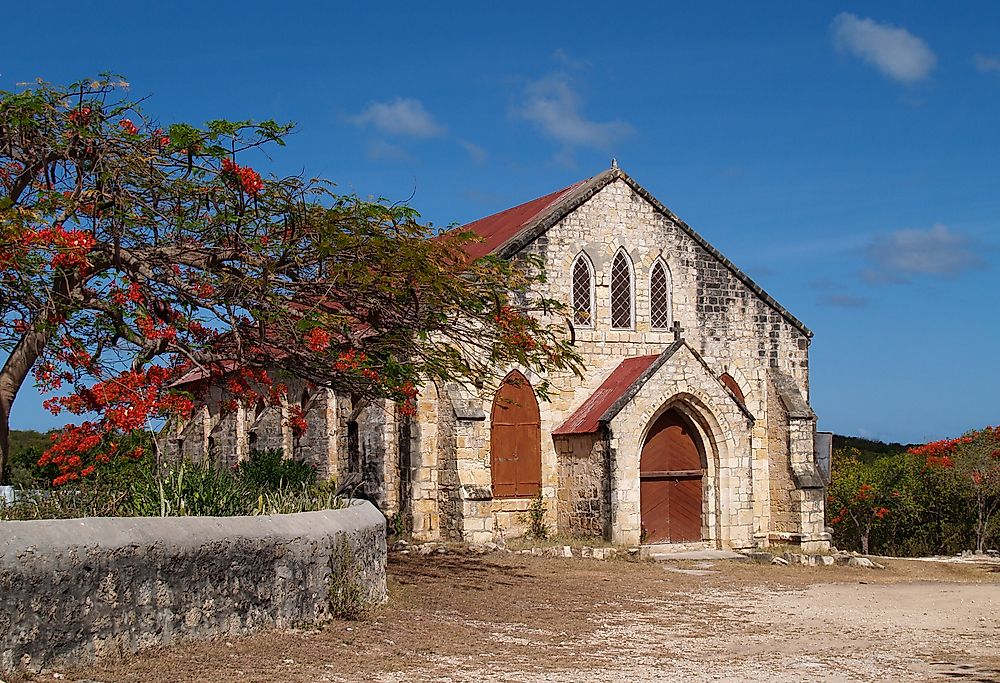The Culture Of Antigua And Barbuda

Antigua and Barbuda is a Caribbean island nation located in the West Indies. The country is named after its two biggest islands, Antigua and Barbuda, and also includes a number of smaller islands. Antigua and Barbuda covers a total area of 170 square miles and has a population of 95,882. This population has the following ethnic distribution: black (87.3%); mixed (4.7%); Hispanic (2.7%); white (1.6%), and other ethnicities (2.7%). English is the country's official language, although Antiguan Creole is also spoken throughout Antigua and Barbuda. Christianity is the predominant religion, and Protestantism and Roman Catholicism are practiced by 68.3% and 8.2% of the population, respectively. However, despite the dominance of Christianity, influences of traditional African religions are still evident throughout the country.
5. Cuisine of Antigua and Barbuda
The national dish of Antigua And Barbuda is fungie, which is primarily made of cornmeal and is similar to polenta. Seasoned rice, lobster, saltfish, and ducana (sweet potato pudding or dumplings) are also widely consumed. Peanut brittle, tamarind and raspberry stew, and sugarcake are popular local confectionaries. The country’s cuisine is now highly diversified and exhibits influences of neighboring countries and other cuisines around the world. For example, jerk meats, rotis, shawarma, and kebabs are popular in Antigua and Barbuda. Saltfish, eggs, lettuce, and eggplant are often prepared for breakfast, while typical lunches include a carbohydrate, like rice or pasta, an entree such as fish, meat, or chicken, as well as vegetables or salad. Dinners include baked or stewed meat, with rice and a local drink. Antiguan Butter Bread is also widely consumed. Popular local drinks include Tamarind, guava, mango, and raspberry juice, seamoss, mauby, coconut milk, and ginger beer. Alcoholic drinks popular on the island are Wadadli beer, malts, rum, and Ponche Kuba Cream Liqueur.
4. Literature and the Arts in Antigua and Barbuda
Written literature in Antigua and Barbuda developed relatively recently. The country's history of sculpture and painting are also less well developed. However, Antigua and Barbuda has rich oral histories in the form of folk tales and legends, heroic epics, and historical accounts. Although many slaves from Africa were brought thousands of miles away from their homeland, their heritage has been preserved in the form of oral histories that were passed down from one generation to the next.
3. Performance Arts in Antigua and Barbuda
Since the majority of Antigua and Barbuda's population is historically linked to West Africa by the slave trade, the country’s music is largely African in nature. Calypso, steel drum, zouk, reggae, and soca are some of the popular music genres, and the country has produced stars in each genre. During the period of French colonial rule, African slaves living on the islands of Antigua and Barbuda were not allowed to publicly celebrate Carnival, but many celebrated secretly in their homes. During these celebrations, benna, a style of percussion, song, and dance was developed. Colonial dance styles like the quadrille and highland fling were also adopted by the country’s residents.
2. Sports in Antigua and Barbuda
Cricket and association football are the two most popular games played by islanders. Antigua and Barbuda has both a national cricket team and a national football team. The former represented the country in the 1998 Commonwealth Games, and some of the country’s cricketers play for the West Indies cricket team. Opened in 2007, Sir Vivian Richards Stadium is a world-class cricket facility in Antigua, and has hosted eight international matches. The national football team entered the World Cup qualifications several times. Rugby and netball are two other widely played games in Antigua And Barbuda.
1. Life and Society
Creolization, which is the creation of new cultures that blend colonial European and local populations, has influenced the culture of the Antigua and Barbuda, just as it has in many parts of the West Indies. The wealthy class is often predominantly white, creolization is minimal, and the culture is similar to many Western nations, with some local adaptations. The middle class exhibits a greater presence of local adaptations. The working class, which is primarily black, has been heavily influenced by both European and African cultures and traditions. Many of these families are matrilocal in nature, and a large proportion of Antiguan and Barbuda's workforce is made up of women.











